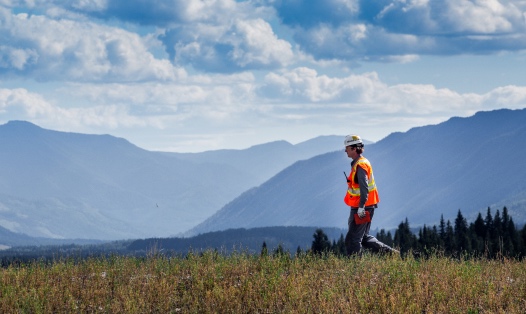Engagement with Local Communities of Interest (COIs)
Engagement with COIs, including local communities and Indigenous Peoples, our workforce, investment communities, industry associations, government, non-governmental organizations (NGOs), business partners and customers, helps to enhance our mutual understanding of interests, concerns and aspirations, and strengthens relationships.
Teck conducts direct engagement, which involves speaking and working directly with COIs, as well as indirect engagement, which involves reviewing publications that reflect the expectations of our COIs. We engage directly with COIs on an ongoing basis. All our operations, exploration sites and projects — including sites in active closure — identify, prioritize and directly engage local and Indigenous governments and communities.
For more details on our approach to engagement with Indigenous Peoples and communities of interest, see Our Approach to Business and Sustainability, Our Approach to Relationships with Communities and Our Approach to Relationships with Indigenous Peoples.
Key Engagement Topics Identified and Managed in 2023
|
Community of Interest |
Description |
Priority Engagement Topics in 2022 |
Learn More |
|
Our Workforce |
Union, non-union, full-time and part-time employees and contractors |
|
Pages 42, 54 |
|
Investors, Financial Institutions |
Institutional investors, other equity holders, debt holders, banks and credit rating agencies |
|
See the 2023 Annual Report for information on financial and operational performance
|
|
Communities |
Local communities, vulnerable communities (including women and children), community-based institutions, and those outside of project- and site-affected communities |
|
Pages 9, 13, 23, 31, 36, 42, 63, 72 |
|
Civil Society, Non-Governmental and Multinational Organizations |
Regional, national and international organizations focused primarily on advocacy |
|
Pages 23, 42, 63, 78 |
|
Academic Institutions and Researchers |
Academic institutions and research organizations |
|
Pages 36, 54, 63 |
|
Governments |
Local government bodies or institutions, provincial/sub-national governments and national/federal governments |
|
Pages 9, 13, 18, 23, 31, 36, 42, 78, 83 |
|
Indigenous Governments and Communities |
Formal governance structures representing Indigenous communities and organizations, including businesses identified by Indigenous communities and traditional land users |
|
Pages 49, 63, 72 |
|
Commercial Interests |
Joint venture partners, large contractors and customers |
|
Pages 18, 23, 83 |
|
Industry Associations
|
Associations representing businesses (e.g., mining associations, sustainable business organizations) |
|
Pages 23, 31, 42, 49, 63, 72 |
